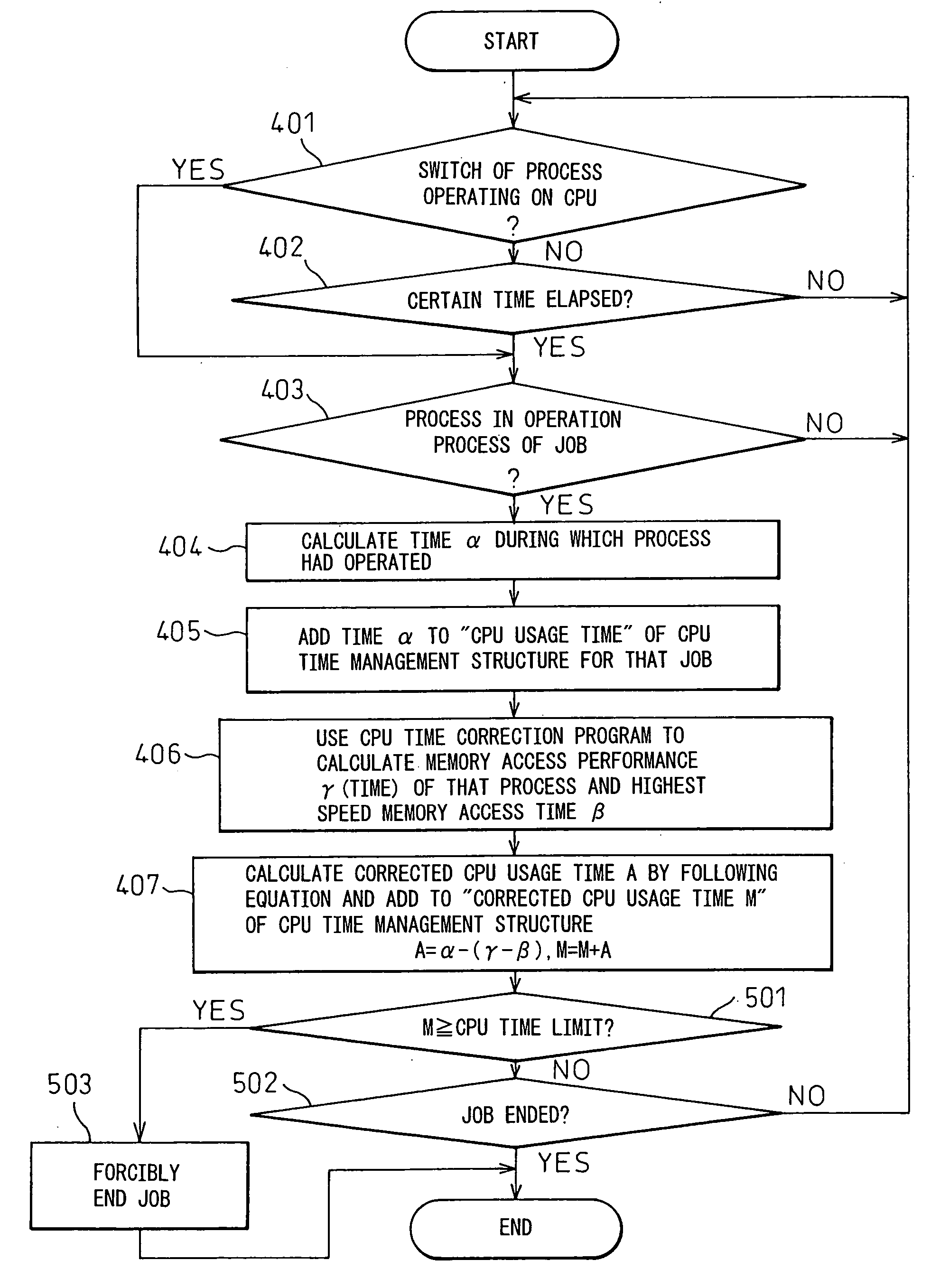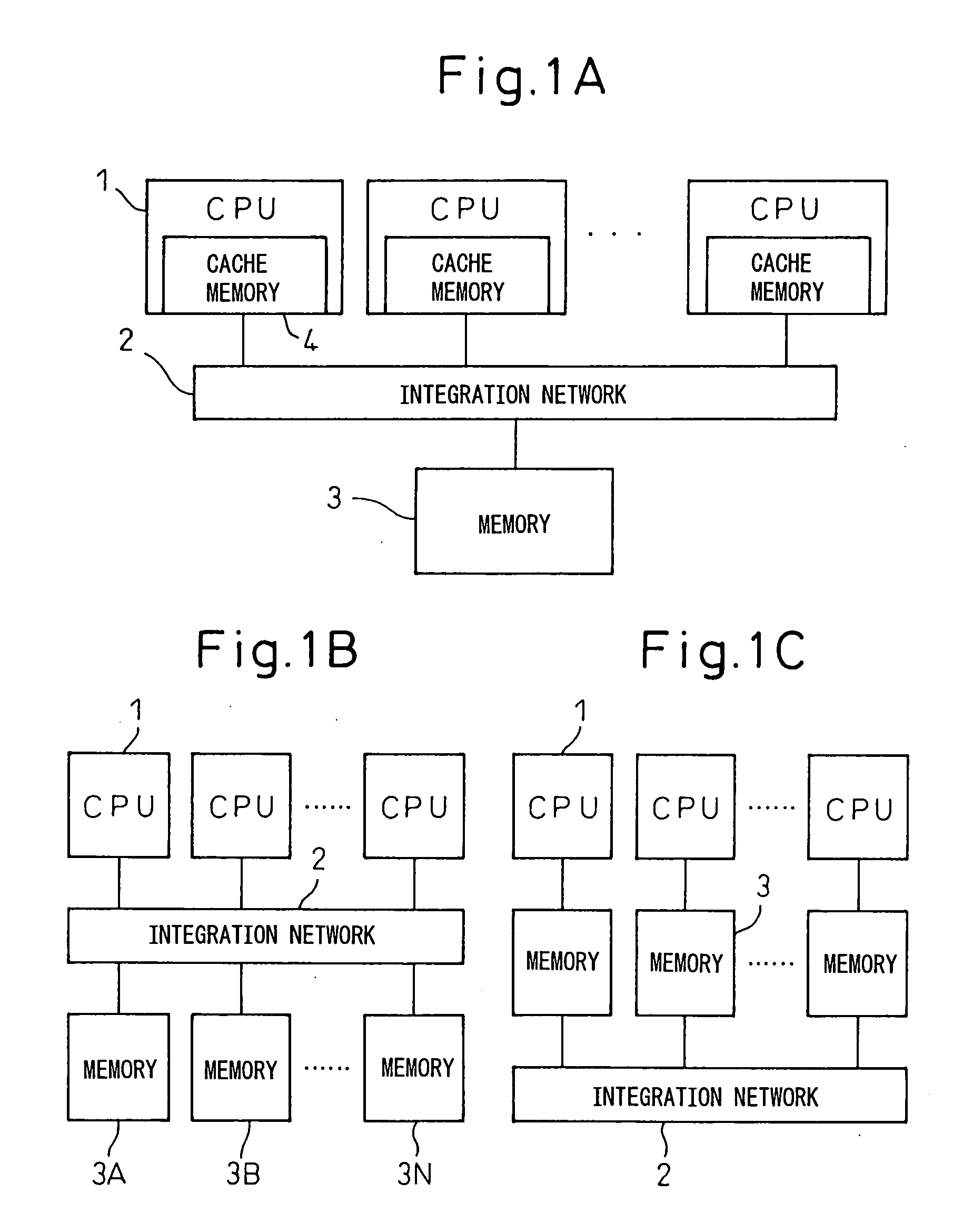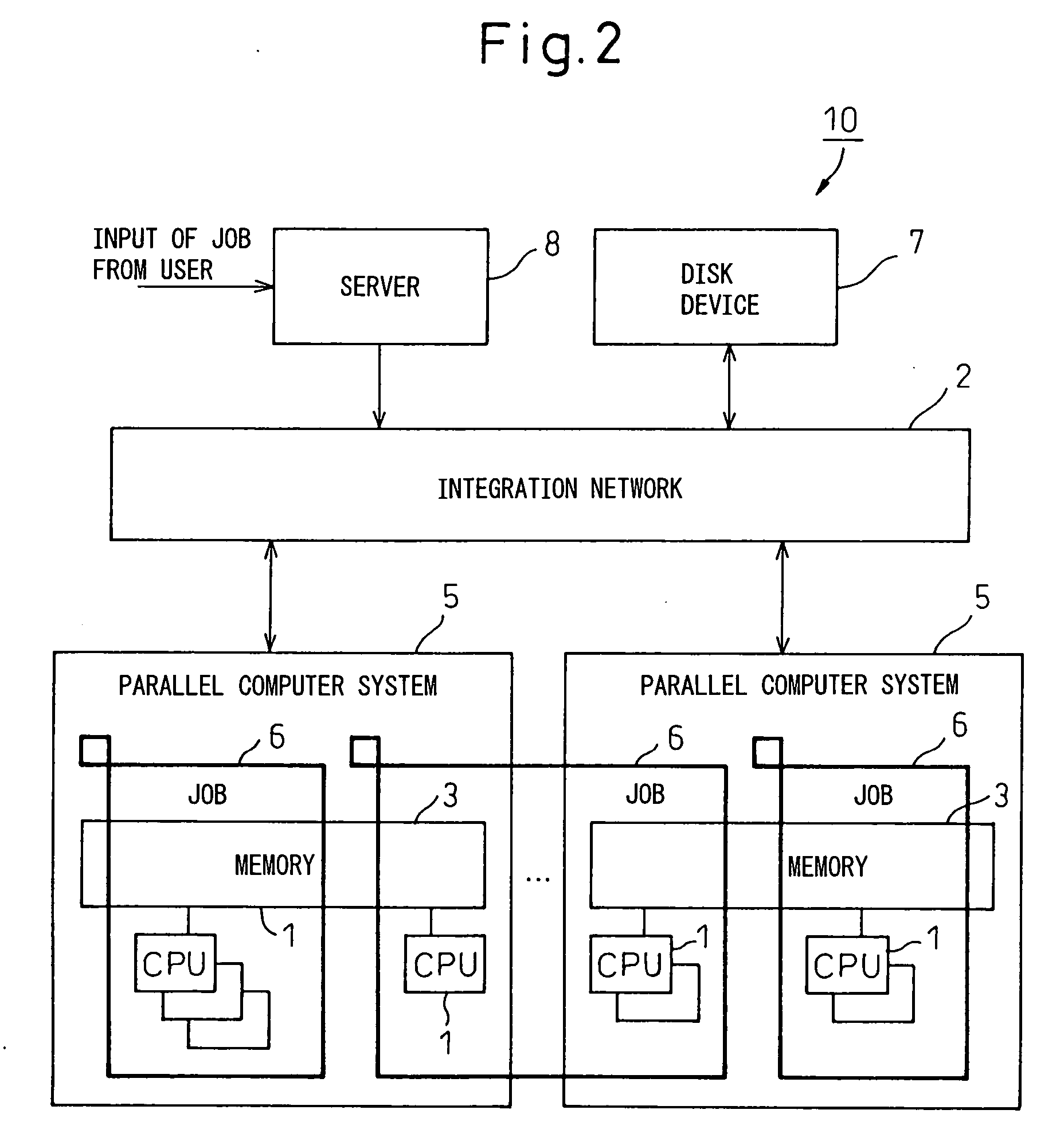CPU usage time counting method and job control system using this CPU usage time
a technology of cpu usage and counting method, applied in the direction of program control, instruments, multi-programming arrangements, etc., can solve the problems of constant cpu usage time and incorrect charging of cpu usage time, and achieve the effect of predicting the performance of a cpu and stable servi
- Summary
- Abstract
- Description
- Claims
- Application Information
AI Technical Summary
Benefits of technology
Problems solved by technology
Method used
Image
Examples
first embodiment
[0056] Here, the CPU usage time count operation for calculating this corrected CPU usage time according to the job management mechanism 20 shown in FIG. 3A will be explained by using the flowchart shown in FIG. 4. This CPU usage time count operation is started up at the time of execution of a job.
[0057] At step 401, it is judged whether or not a process operating on the CPU had been switched. The “process” is the minimum unit of execution of a job. When a switch occurred, the routine proceeds to step 403, while when no switch occurred, the routine proceeds to step 402, where it is judged whether or not a constant time has elapsed after shifting to this process. When the constant time has elapsed, the routine proceeds to step 403, while when the constant time has not elapsed, the routine returns to step 401. The case where it is judged at step 401 that the constant time has elapsed is the case where the job exceeds the limit before the switching of the process.
[0058] When the routin...
second embodiment
[0063]FIG. 5 is a flowchart of the CPU usage time count operation for calculating this corrected CPU usage time according to the job management mechanism 20 shown in FIG. 3A. This is a modification of the CPU usage time count operation explained in FIG. 4. The difference of the CPU usage time count operation shown in FIG. 5 from the CPU usage time count operation explained in FIG. 4 resides in only the processing after step 407. Accordingly, the explanation of the processing from step 401 to step 407 will be omitted, and only portions different from the flowchart explained in FIG. 4 will be explained.
[0064] As explained above, in the first embodiment, at step 407, the corrected CPU usage time A was calculated by A=α−(γ−β), and this calculated time A was added to the time M (described as the “corrected CPU usage time” in FIG. 4) stored in the corrected CPU usage time storage area 24 of the CPU time management structure 23 (M=M+A). In the second embodiment, at the next step 501, it is...
third embodiment
[0067]FIG. 6 is a flowchart of the CPU usage time count operation for calculating this corrected CPU usage time according to the job management mechanism 20 shown in FIG. 3A. This is a modification of the CPU usage time count operation explained in FIG. 5. The difference of the CPU usage time count operation shown in FIG. 6 from the CPU usage time count operation explained in FIG. 5 resides in only the processing after step 407. Accordingly, the processing from step 401 to step 407 are combined as step 600, the explanation thereof is omitted, and only the portions different from the flowchart explained in FIG. 5 will be explained.
[0068] The third embodiment shows the operation when there is a request for notification of the intermediate result of the corrected CPU usage time from a job in the count operation of the corrected CPU usage time or a request for notification of the corrected CPU usage time in the previous job. In the third embodiment, during the count operation of this co...
PUM
 Login to View More
Login to View More Abstract
Description
Claims
Application Information
 Login to View More
Login to View More - R&D
- Intellectual Property
- Life Sciences
- Materials
- Tech Scout
- Unparalleled Data Quality
- Higher Quality Content
- 60% Fewer Hallucinations
Browse by: Latest US Patents, China's latest patents, Technical Efficacy Thesaurus, Application Domain, Technology Topic, Popular Technical Reports.
© 2025 PatSnap. All rights reserved.Legal|Privacy policy|Modern Slavery Act Transparency Statement|Sitemap|About US| Contact US: help@patsnap.com



